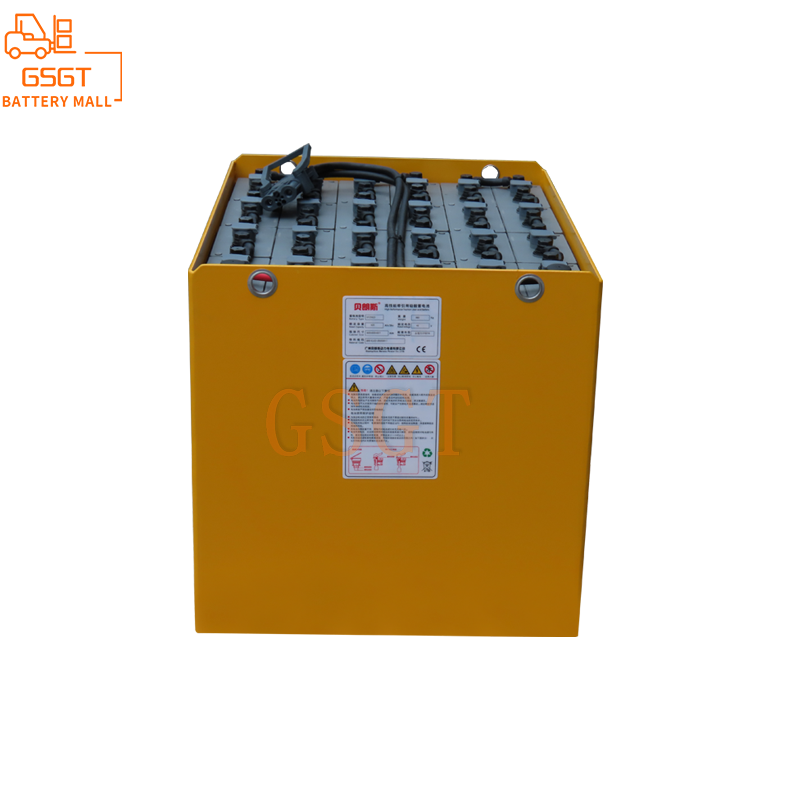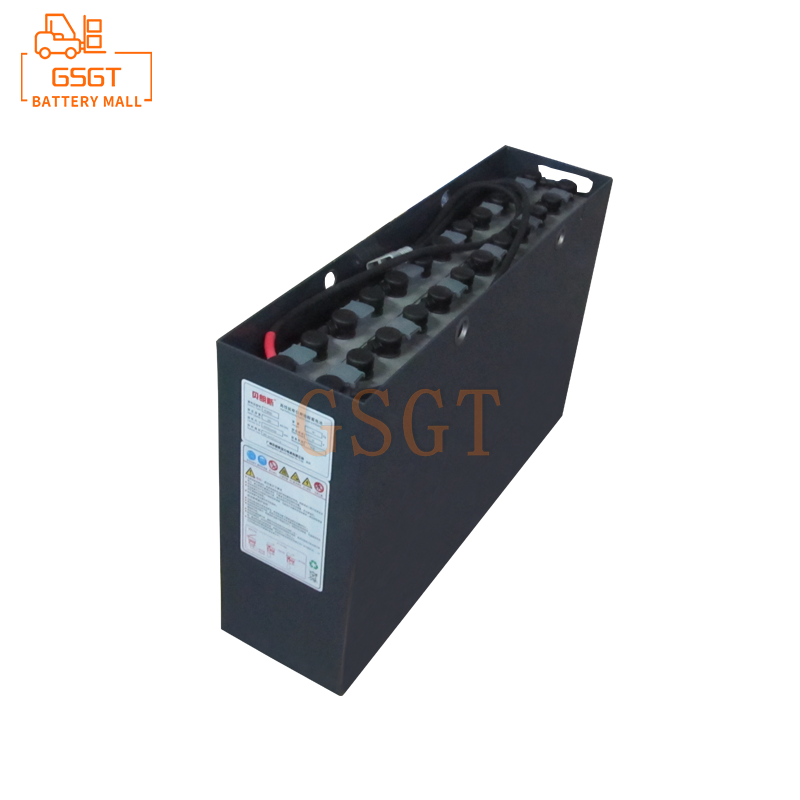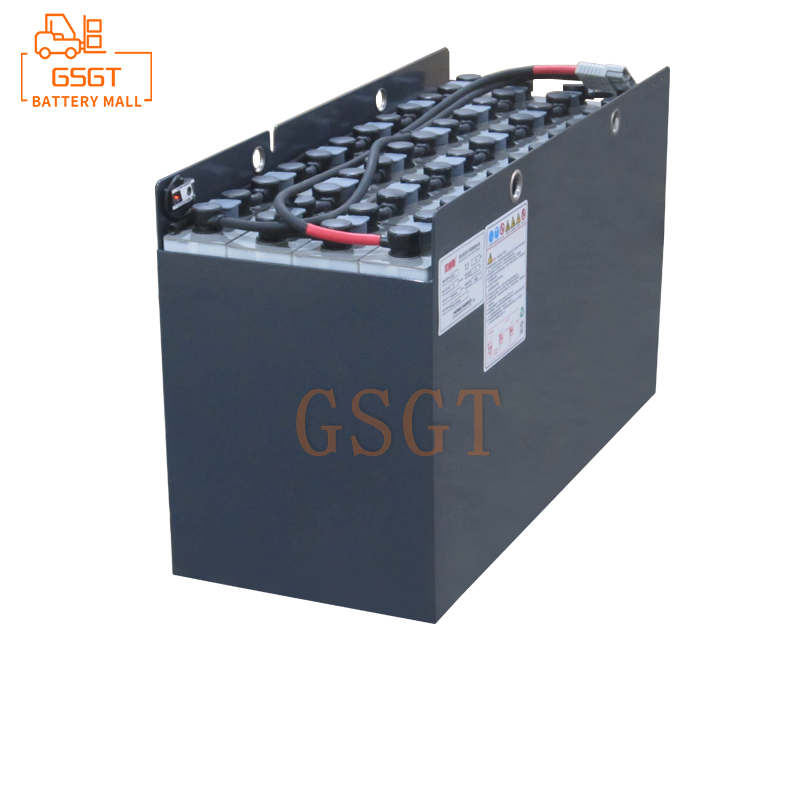Time:2025-05-28 10:22:26
Browse:607
Introduction
In modern logistics, warehousing, industrial production and other fields, forklifts, as key material handling equipment, their efficient and stable operation is crucial for ensuring the smoothness of the production process. As one of the main power sources of forklifts, lead-acid batteries for forklifts are confronted with numerous challenges in long-term, high-frequency and high-intensity operation scenarios. How to make the lead-acid batteries of forklifts adapt to the demands of high-intensity operations has become a key issue for improving the operational efficiency of forklifts, reducing operating costs and ensuring the continuity of production. In-depth research and solution of this problem are of great significance for promoting the development of related industries.
The current situation of lead-acid batteries in forklifts
Overview of the Current Application Status
At present, lead-acid batteries are widely used in the forklift field. According to relevant data, over 60% of industrial forklifts worldwide use lead-acid batteries as their power source. In indoor storage environments, it is highly favored due to its noise-free and pollution-free operation characteristics, which can meet the strict requirements of modern enterprises for environmental protection and safety. However, lead-acid batteries also have some inherent drawbacks, such as a relatively low energy density, which limits the driving range of forklifts. In scenarios where continuous operation for long periods is required, frequent battery replacement or recharging is often necessary. Its weight is relatively large, which not only increases the load of the forklift itself, but also may affect the handling performance and energy utilization efficiency of the forklift. In addition, the lifespan of lead-acid batteries is usually between 3 and 5 years, and they need to be replaced regularly, which increases operating costs.
The challenges of high-intensity operations to lead-acid batteries in forklifts
High-load discharge test
In high-intensity operations, forklifts frequently perform operations such as starting, accelerating, transporting heavy objects, and climbing slopes, which requires lead-acid batteries to provide a large current within a short period of time for high-load discharge. For instance, in a logistics warehouse, forklifts may need to rapidly move multiple pallets of goods within a short period of time, shuttling back and forth from the shelf area to the loading and unloading area, and the batteries need to continuously discharge at a relatively high power. Long-term exposure to such a high-load discharge state will accelerate the shedding of active substances on the battery plates, leading to plate damage and subsequently causing a rapid decline in battery capacity and shortening the battery's service life.
The problem of charging time and efficiency
High-intensity operations mean that forklifts are used for a long time and have extremely high requirements for the charging speed and efficiency of batteries. The traditional charging methods for lead-acid batteries usually involve constant current or constant voltage charging, which takes a relatively long time. Generally, it takes 8 to 10 hours to fully charge the battery. For forklifts that operate continuously in multiple shifts, excessively long charging times will seriously affect the actual available time of the forklifts and reduce operational efficiency. Moreover, during the charging process, lead-acid batteries have the problem of low energy conversion efficiency. Approximately 20% to 30% of the electrical energy is lost in the form of heat, which not only wastes energy but may also cause the battery to overheat, affecting its performance and safety.
The problem of shortened cycle life
Under high-intensity operations, the lead-acid batteries of forklifts need to undergo frequent charge and discharge cycles. As the number of cycles increases, problems such as sulfation of the plates and drying up of the electrolyte will gradually occur inside the battery. Plate sulfation refers to the formation of a layer of white and hard lead sulfate crystals on the plates of a battery when it is in a discharged or semi-discharged state for a long time. These crystals are difficult to be reduced during normal charging, resulting in an increase in battery internal resistance and a decrease in capacity. The drying up of the electrolyte will prevent the normal electrochemical reactions inside the battery, further exacerbating the deterioration of the battery's performance. Under normal circumstances, the cycle life of lead-acid batteries is approximately 1,500 times under normal usage conditions. However, in high-intensity working environments, their cycle life may decrease.
Strategies for enhancing the adaptability of forklift lead-acid batteries to high-intensity operations
Technological improvement and innovation
Optimize the material and structure of the plates
Developing new types of plate materials is one of the key ways to improve the performance of lead-acid batteries. For instance, high-performance alloy materials such as lead-calcium alloy are adopted to replace the traditional lead-antimony alloy as the material for the plate grid. Lead-calcium alloy has a low gas evolution rate and good corrosion resistance, which can effectively reduce water loss during the charging and discharging process of the battery and extend the service life of the battery. Meanwhile, optimizing the structural design of the plates, such as increasing the surface area of the plates and adopting a more reasonable plate grid layout, can enhance the contact area between the plates and the electrolyte, improve the efficiency of electrochemical reactions, and enhance the charging and discharging performance and capacity of the battery. Some advanced plate designs can increase the battery capacity by 10% - 15%.
Improve the electrolyte formula
Improving the electrolyte formula can significantly enhance the performance of lead-acid batteries. By adding special additives such as tin (II) sulfate and sodium sulfate, the formation of sulfation on the plates can be suppressed, thereby enhancing the low-temperature performance and cycle life of the battery. In addition, adjust the concentration and density of the electrolyte to ensure that it maintains the best electrical conductivity and reactivity under different working temperatures and charging and discharging conditions.
Introduce advanced charging technology
To solve the problems of long charging time and low efficiency, it is imperative to introduce advanced charging technology. For instance, by adopting pulse charging technology and applying periodic pulse currents to the battery, lead sulfate crystals on the battery plates can be effectively eliminated during the charging process, enhancing the charging acceptance capacity, accelerating the charging speed, and at the same time, reducing battery heating and gas evolution, thereby extending the battery's lifespan. Compared with traditional charging methods, pulse charging can reduce the charging time by 30% to 50%. In addition, intelligent charging technology is also a future development direction. By monitoring parameters such as voltage, current, and temperature of the battery in real time, it intelligently adjusts the charging strategy to achieve precise charging of the battery. This not only ensures that the battery is fully charged but also avoids damage to the battery caused by overcharging and undercharging.
Maintenance and upkeep measures have been strengthened
Regular inspection and maintenance
Establish a strict regular inspection system to conduct comprehensive checks on the appearance, connection lines, electrolyte level and density, battery voltage and capacity, etc. of forklift lead-acid batteries. Conduct a visual inspection at least once a week to check if the battery casing has any cracks, leaks, etc., and if the connection lines are loose or corroded. Check the electrolyte level and density once a month to ensure that the level is within the normal range and the density meets the standard requirements. Conduct a battery capacity test once every quarter to keep track of the battery's health condition in a timely manner. For the problems found, they should be dealt with in a timely manner, such as replenishing the electrolyte and replacing damaged parts, etc.
Reasonable charging management
Follow the correct charging norms and avoid overcharging and undercharging. Before charging, first check the status of the battery to ensure that it is connected correctly and without any abnormalities. Use a suitable charger and select the appropriate charging current and voltage based on the battery capacity and remaining power. During the charging process, closely monitor the battery's temperature and charging progress. When the battery temperature exceeds the specified value, stop charging or reduce the charging current to prevent the battery from overheating. At the same time, avoid charging the battery only when it is completely drained. Try to keep the battery charging within the range of 20% to 80%, which can effectively extend the battery's lifespan.
Electrolyte management
Regularly test and maintain the electrolyte to ensure its quality and performance. Adjust the density of the electrolyte in a timely manner according to the battery's usage and the ambient temperature. During the hot summer, as the electrolyte evaporates relatively quickly, the frequency of electrolyte replenishment should be appropriately increased. In winter when the temperature is low, it is necessary to pay attention to preventing the electrolyte from freezing. The density of the electrolyte can be appropriately increased. In addition, the electrolyte should be filtered and purified regularly to remove impurities and contaminants, ensuring its purity and maintaining a favorable electrochemical reaction environment inside the battery.
Job management and optimization
Forklift dispatching and usage planning
Reasonably arrange the operation tasks and scheduling of forklifts to avoid long-term continuous high-intensity operations of forklifts. According to different operation scenarios and task requirements, optimize the driving routes and handling processes of forklifts, reduce unnecessary start-up, acceleration and braking operations, and lower the energy consumption of batteries. For instance, in a warehouse, a zoned operation approach can be adopted, where different types of goods handling tasks are assigned to different forklifts, enabling them to operate efficiently within relatively fixed areas and reducing travel distance and time. At the same time, based on the battery capacity and remaining power of the forklift, the operation time should be reasonably arranged. When the battery power is low, the forklift should be promptly charged or the battery replaced to avoid operation interruption due to insufficient power.
Battery rotation usage strategy
By adopting a strategy of battery rotation, multiple sets of batteries are equipped. During the operation of the forklift, when the power of one set of batteries is about to run out, they are promptly replaced with fully charged batteries to ensure the continuous operation of the forklift. Meanwhile, the batteries that have been rotated should be charged and maintained in a timely manner to keep them in good standby condition. By rationally planning the battery rotation sequence and time, each group of batteries can get sufficient rest and undergo reasonable charge and discharge cycles, avoiding overuse of batteries and extending their overall service life.
Summary
Through in-depth research on the working principle, challenges and strategies for enhancing adaptability of forklift lead-acid batteries under high-intensity operations, it can be seen that although lead-acid batteries have some inherent defects, through comprehensive measures such as technological improvement, strengthened maintenance and care, and optimized operation management, It can significantly enhance its performance and reliability in high-intensity working environments. In terms of technological improvement, optimizing the material and structure of the plates, improving the electrolyte formula, and introducing advanced charging technologies have made it possible to enhance battery performance. Strengthening maintenance measures, regular inspections, reasonable charging management and electrolyte management are the keys to ensuring the healthy operation of batteries. Operation management and optimization, forklift dispatching planning and battery rotation usage strategies have improved the utilization efficiency and lifespan of batteries from the usage level.

$1440

$2535

$1060

$1790

MESSAGE
Professional And Efficient
Security
Affordable Price
Professional Services